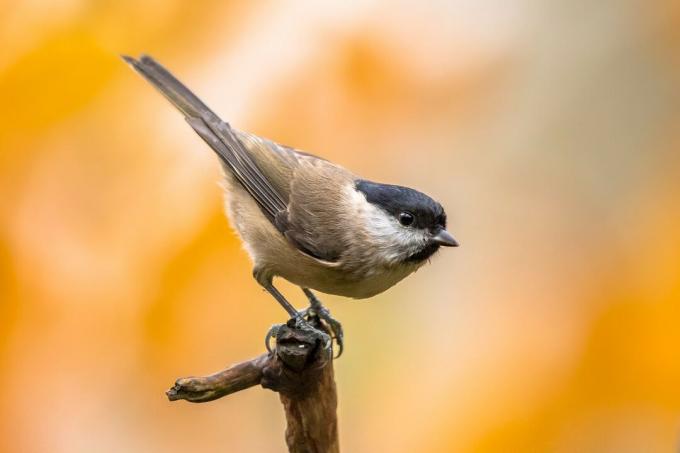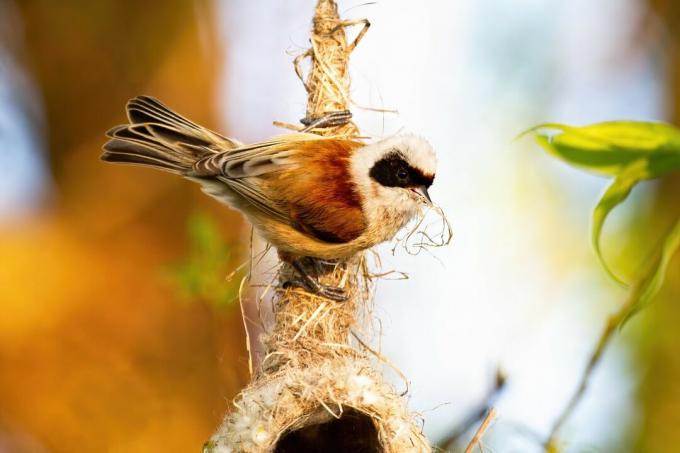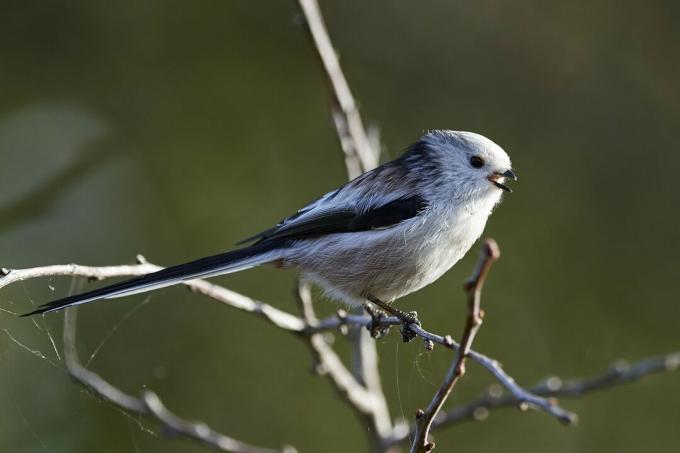
Tits are one of the best-known native bird species. The little shuttlecocks fascinate young and old. The time when the offspring fledge is exciting. When do tits leave the nest?
In a nutshell
- various tit species native to Germany
- Average incubation period of two weeks
- Young animals remain in the nest for about three weeks
- Nest boxes provide important breeding opportunities
Table of Contents
- tit species
- Blue tit (Cyanistes caeruleus)
- Great tit (Parus major)
- Crested Tit (Parus cristatus)
- Marsh Tit (Poecile palustris)
- Coal Tit (Periparus ater)
- Willow Tit (Poecile montanus)
- Tits by name only
- Pendulum tit (Remiz pendulinus)
- Long-tailed tit (Aegithalos caudatus)
- frequently asked Questions
tit species
Living in Germany different tit species. Most like to breed in nest boxes and can thus be perfectly observed when raising and feeding the young. If no nest box can be found, letter boxes and even watering cans are used as substitutes.
The time the young birds spend in the nest before they fledge is called the nestling period. the
breeding seasons and the nestling season of the native tit species differ only slightly:Blue tit (Cyanistes caeruleus)
The blue tit requires Nest boxes with a small entrance hole (27 to 28 millimeters in diameter). If the flight holes are larger, the little blue tits are chased away by great tits.

- Clutch size: 8 to 12 eggs
- Incubation period: 13 to 15 days
- Nestling time: 17 to 21 days
Great tit (Parus major)
The great tit is the most common and the largest tit species in Germany. It breeds wherever there are trees and nest boxes.

- Clutch size: 7 to 13 eggs
- Incubation period: 12 to 16 days
- Nestling time: 15 to 21 days
Crested Tit (Parus cristatus)
The characteristic black and white crest gave the crested tit its name. It occurs in coniferous forests and in parks with coniferous trees.

- Clutch size: 5 to 8 eggs
- Incubation period: 13 to 15 days
- Nestling time: 20 to 23 days
Marsh Tit (Poecile palustris)
The marsh tit doesn't build its own burrows. If no nesting box is available, it uses abandoned burrows of other bird species.

- Clutch size: 6 to 10 eggs
- Incubation period: 12 to 15 days
- Nestling time: 17 to 20 days
Coal Tit (Periparus ater)
It looks similar to the great tit. In contrast to her, however, there is no yellow in the head area of the coal tit.

- Clutch size: 9 to 11 eggs
- Incubation period: 13 to 17 days
- Nestling time: 16 to 23 days.
A notice: Coal tits are cave nesters. They build their nests near the ground between tree roots, in burrows and sometimes even in mouse holes.
Willow Tit (Poecile montanus)
The willow tit looks confusingly similar to the marsh tit. However, the two species can be easily distinguished by their song.

- Clutch size: 6 to 9 eggs
- Incubation period: 13 to 14 days
- Nestling time: 17 to 19 days
Tits by name only
The following two species are called tits, but from a zoological point of view they belong to different families. The young of these "tits" also leave the nest after about three weeks.
Pendulum tit (Remiz pendulinus)
The penduline tit builds a large, globular, matted nest, preferably on hanging branches of birch, alder, and willow.

- Clutch size: 7 to 12 eggs
- Incubation period: 12 to 13 days
- Nestling time: 14 to 19 days
Long-tailed tit (Aegithalos caudatus)
The long tail is the most distinctive feature of the long-tailed tit. It is very sociable and often found in groups.

- Clutch size: 7 to 12 eggs
- Incubation period: 12 to 13 days
- Nestling time: 14 to 19 days
A notice: Did you know that several long-tailed tits often help the bird parents to feed the young?
frequently asked Questions
no It is forbidden to disturb birds during the breeding season, as well as when raising the young. As cute as these little birds are, always keep a safe distance from the nest. Otherwise you could endanger the young birds. It often happens that the bird parents leave unsafe nests. The young birds would then starve to death in the nest box.
Most species breed only once a year between March and July. Two annual broods are the norm for the great tit and coal tit.
When young birds do not survive, the most common reason is the loss of a parent. One parent alone cannot take care of the brood. The weather also has an influence on the thriving of the offspring. Sudden onset of cold combined with heavy rain can kill the birds. Another danger comes from toxins in gardens and on agricultural land. Insecticides can be fatal to nestlings even in small amounts ingested with their food.



